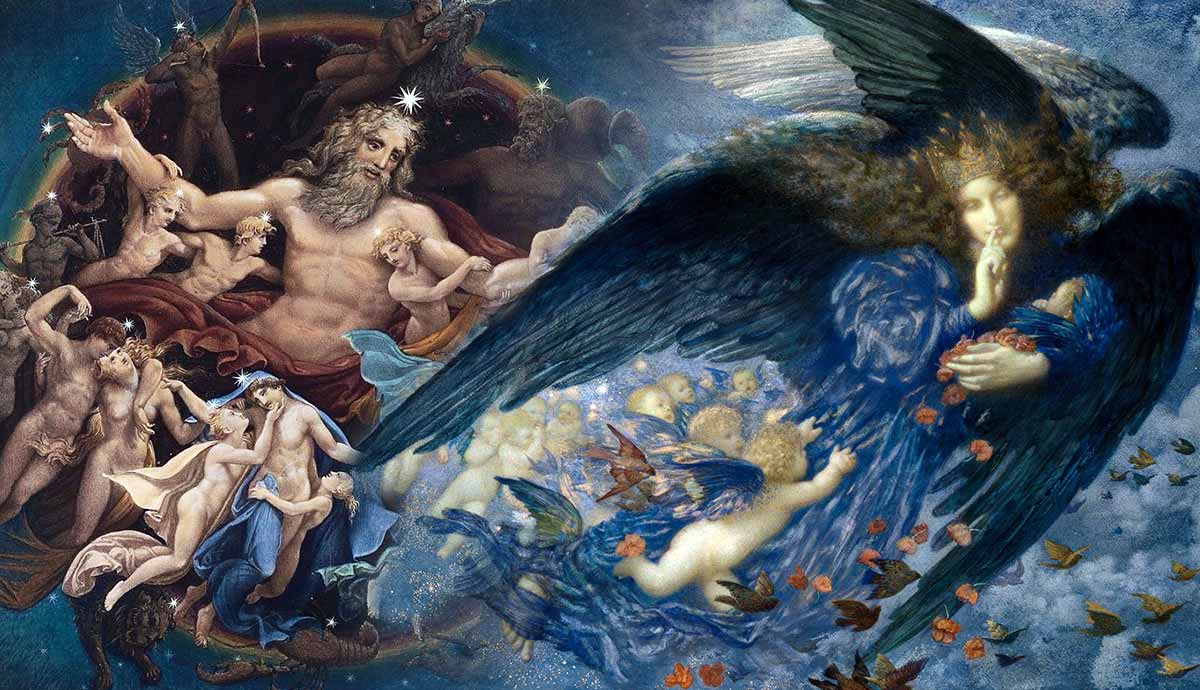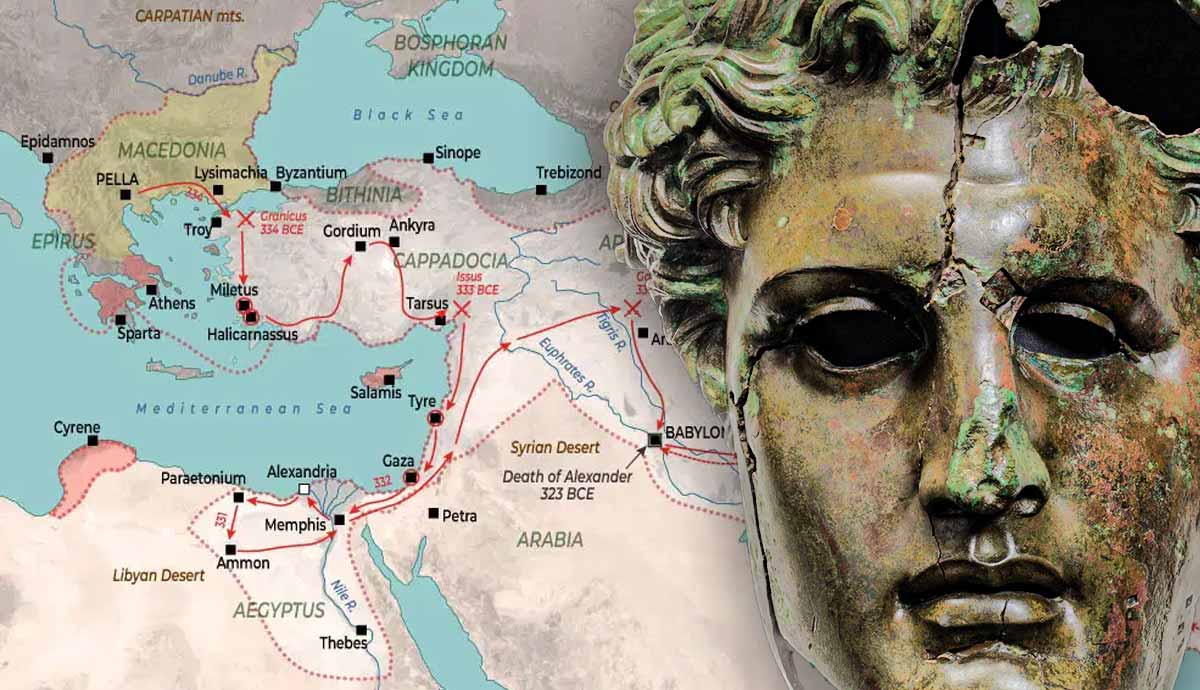
In 1998, a Guatemalan scuba diver noticed something strange lurking in the depths of Lake Atitlán. His unlikely discovery led to decades of excavation, revealing the ruins of an ancient Maya pilgrimage site: a forgotten island of enormous religious importance. Like a Mesoamerican Atlantis, the submerged city had been left abandoned, unseen, and untouched for over a thousand years.
The excavation of Samabaj presents us with a unique opportunity to bear witness to remnants of the Maya civilization, left completely unaffected by looting, vandalism, and colonialism. What does this immense sunken island reveal about the lives and beliefs of the ancient Maya?
Samabaj’s Maya Ruins: The Importance of the Holy Island

In the beginning, there was only a languid sea and a dark sky alone in the cosmos. Until, that is, the creator gods Tepeu and Q’uq’umatz changed everything. Ordering the waters to part and land to ascend from the inky depths, the gods created the earth. They bade the water to “withdraw and lift, and the land rise up”, and thus with their command, “May the empty space be filled!”, the earth was born. This, according to the Popul Vuh, “the Maya Bible”, is how the world came into being.
Lake Atitlán (meaning “place of water” in the indigenous Nahuatl language) sits within Guatemala’s verdant southwestern highlands. Encircled within a ring of towering volcanoes, the lake’s luminous expanse is reminiscent of the very place described in the ancient creation story. Though it still hums with a certain spiritual potency, the lake looked slightly different seventeen centuries ago. It possessed an island with a lone peak, surrounded by water and encircled by mountains. This island, to the ancient Maya, perfectly modeled the archetypal primordial landscape. The physical place represented the very center of the cosmos, where the gods’ first acts of creation had taken place.
For centuries, beginning in roughly the fifth century BCE, the venerated island served as a pilgrimage site, and was visited by worshippers from across the highlands of Guatemala. There, on the sacred island, priests would have attended a plethora of religious shrines and monuments. Holy men studied smoke trails in the skies, interpreting the divine messages sent by the gods to priests and pilgrims.
A Natural Disaster

But all of this vanished sometime between 250 and 300 CE, when the mighty Atitlán volcano erupted. Bursting up from the bowels of the earth, lava and refuse tumbled down towards the lake’s outlet. With the sole drainage channel irrevocably barricaded and the continued inflow of streams and rainfall, Lake Atitlán’s water level began to rise.
Within a year, a few months, or perhaps even a few short weeks, the rising waters had reclaimed the island, swallowing the land along with its treasures and temples whole. The waves that threatened to breach the temples’ threshold had forced the holy men and pilgrims to abandon their sacred island. By the time the rising water level had halted, the thirty-acre island had been engulfed by over sixty feet of water.
Discovering Samabaj’s Hidden Treasures

The island and its sunken Maya ruins might have been forever lost to history if it were not for a scuba diver named Roberto Samayoa. In 1998, Samayoa spotted something strange lurking at the bottom of the lake. Intrigued, the diver contacted archaeologists to inform them of what appeared to be the Maya ruins of a submerged site.
The archaeologists were skeptical at first, assuming that some stray bits of pottery must have fallen into the lake. It was not until 2007, when Samayoa brought his own pictures of underwater stone staircases, plazas, and even a public square, that researchers understood the magnitude of the discovery.
These sunken Maya ruins of the sacred island were unspoiled relics, snapshots preserved in time that hadn’t been seen or touched by another human being since they disappeared beneath the waves. The Maya ruins of Samabaj, having been so totally undisturbed by urbanization or looters, are absolutely unique. There is no other site in Maya civilization that has been so perfectly safeguarded by its own destruction.
We will probably never know the island’s true name. But Samayoa gave the then-nameless place a piece of his own surname, combined with the K’iche’ word abaj meaning “stone”. Now the mysterious Maya ruins of an almost-lost world had a name: Samabaj.
Over the next grueling five years of carrying out this underwater excavation, the Maya ruins of Samabaj began to reveal themselves, granting their new visitors a glimpse into ancient Maya civilization and the island’s former glory, for the first time in over 1,700 years.

No fewer than sixteen holy structures were discovered in Atitlán’s murky waters. The complex included seven standing stonework stelas, proving Samabaj’s status as a place of profound religious importance. Leading archaeologist Sonia Medrano and her team probed the site for further clues as to what the island would have meant to ancient Maya inhabitants. They pieced together an emerging picture of a beguiling complex that had been built in finely-balanced harmony with its momentous natural surroundings. The researchers identified three stone jetties – the largest of which is still visible – located where the island’s shore once was; indisputable evidence of a continued influx of boatloads of pilgrims being ferried to and from the sacred island.
Awaiting the crowds of disembarking pilgrims would be a steep hillside, flanked by two long ridges of hardened lava, funneling them towards the main plaza: Samabaj’s grand “acropolis”. At over fifty yards wide, this square was designed to fit the hundreds of worshippers that had gathered there to observe ritual dances, sacrifices, and other quintessential Maya ceremonies. The island also appears to have had a number of permanent residents. Thirty residential buildings have been found to the island’s southwest—most likely the domain of Samabaj’s permanent residents; the staff, their families, and priests.
Life and Ritual on the Sacred Island

The incredible Maya ruins of Samabaj could help deepen our understanding of the religious beliefs and rituals of the ancient Maya. At least two saunas have been uncovered, similar to those found at other sites of ancient Maya worship. The saunas or “sweat baths” were incredibly significant parts not only of worship but also of medicine. Pilgrims would use the sweat baths to spiritually purify themselves before proceeding to the shrines and also to rectify illnesses or perceived imbalances in the body.
Another interesting find—a scorched human tooth—suggests that at Samabaj, priests kept sacrificial fires used to create prophetic smoke columns from which they would interpret divine messages. Spectators on the shores of the surrounding mainland would have been able to watch the blazing fires as if from an immense natural amphitheater. To the twenty-first century mind, the spectatorial nature of this might feel reminiscent of other ancient examples of gory showboating—the Roman gladiatorial games, perhaps. And, indeed, the Maya have a (somewhat unfair and certainly exaggerated) reputation for bloody rituals and human sacrifice.

But the reasoning behind the Maya’s use of human sacrifice could be explained by a religious concept known as “k’ex”. This refers to the Maya belief in reciprocal sacrificial payment. The human narrative, like everything else in the natural world, was one of a cycle: planting, growing, and consuming. But for everything that humans take, everything that the gods give, there must be a price. Therein lies the sinister consequence. To pay their debt, humans had to feed the gods, nourishing them with incense, smoke, praise and, yes, sometimes with blood. A combination of centuries of colonist propaganda and media sensationalism has characterized the ancient Maya as exceptionally brutal and sadistic, reveling in bloody rituals, chopping off heads, cutting out hearts, and disemboweling their victims with staggering regularity.
Unfortunately, there is some truth to these accounts. But, as Maya anthropologist Stephen Houston has shown, this reduction of Maya people to violent caricatures fails to do the Maya civilization justice in two crucial ways. Firstly, it fails to offer any context as to the reasons for ritual sacrifice and the concept of k’ex exchange. Secondly, it fails to account for the fact that there is insufficient evidence to suggest that the Preclassic or Classic Maya actually performed human sacrifice or bloodletting very regularly. As Houston points out, the Maya often used substitutes that simply looked like blood. Red paint and incense (“the blood of trees”) would do in a pinch.
In any case, the ongoing excavations at the Maya ruins of Samabaj, a site of profound spiritual importance, will doubtless continue to reveal more and more about ancient Maya life and religious practice.
A Sunken City

We can only imagine the worshippers’ interminable sense of loss when their sacred island started to disappear before their very eyes. The water’s gradual encroachment at least gave Samabaj’s inhabitants time to evacuate, taking some of their most precious objects with them. Archaeologists have deduced from the remnants at the site that the residents took the more important portable objects when they left. Less valuable crockery still lies strewn where Samabaj’s shore once lay, painting a picture of the panicked residents fleeing with their most prized possessions.
The abandoned objects, now encased in the soil at the bottom of the lake, can be dated no later than 300 CE. On this basis, researchers have concluded that the eruption must have taken place at the end of the period known as the Preclassic, when the great cities of the Guatemalan highlands that had dominated the Maya world, would crumble and fall.
In an eerie coincidence, around the time of Samabaj’s disappearance, the powerful cities of Kaminaljuyú and Takalik Abaj saw brutal upheavals from which they would never recover. Chaos and violence ushered the Preclassic era to an abrupt close. The old order was dead, and a new order was about to begin.

Historians are still struggling to identify the cause of this sharp transposition. But whatever the mysterious forces that plunged the Maya from the Preclassic into the Classic, one thing was certain: the apex of Maya civilization had unequivocally shifted down to the steamy Petén lowlands. There, the famed cities of Tikal and El Mirador would ascend to extraordinary heights of opulence and cultural grandeur before their own mysterious fall.
Samabaj, meanwhile, took its place in history—another abandoned heirloom of bygone splendor. Lying in its watery grave, the forgotten sacred island became an untouched relic of a world that was almost lost.
The Maya Ruins of Samabaj: A Relic of an Ancient Civilization
In an ironic twist of fate, Samabaj’s tragedy is also its triumph. Its own destruction and disappearance protected it from the catastrophic effects of looting, urbanization, and colonization, of which so many other important indigenous American sites have fallen foul. Seldom do we get an opportunity to discover such an incredible remnant of Maya civilization, unscathed by the centuries of colonialism that succeeded it. The ongoing excavations and exploration of Samabaj’s Maya ruins continue to bring us a rare and exciting encounter with the distant past and an invaluable glimpse into the lives, beliefs and traditions of the ancient Maya.










